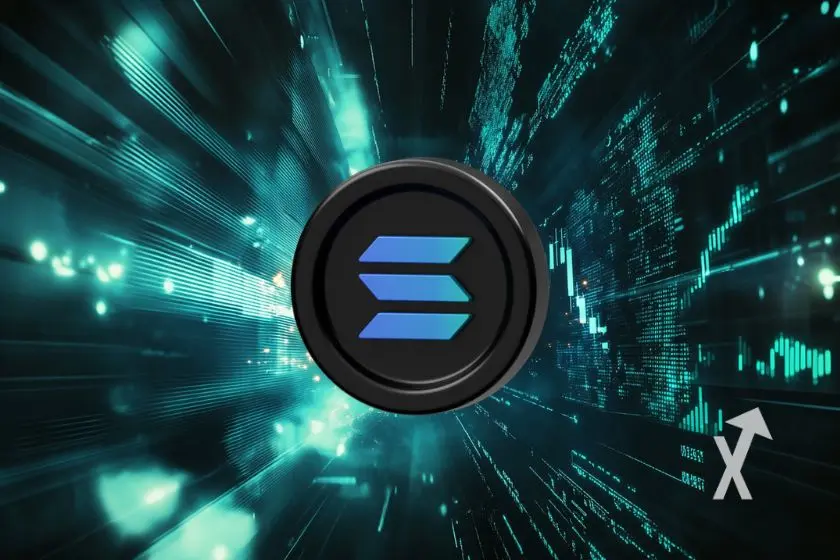Why Is Solana Gaining So Much?
Why is Solana gaining so much attention, adoption, and value in 2025? Once viewed as a risky “Ethereum alternative,” Solana (SOL) has emerged as one of the most powerful ecosystems in the blockchain industry. Its rapid rise is being fueled by a combination of technical innovation, strategic partnerships, booming decentralized finance (DeFi) activity, and growing institutional interest.
This article investigates the underlying factors driving Solana’s momentum and explores whether its growth is sustainable—or just another fleeting crypto hype cycle.
The Evolution of Solana: From Underdog to Industry Leader
A History of Volatility
Solana was launched in 2020 with the promise of high-speed transactions at low costs, supported by its unique Proof-of-History (PoH) consensus mechanism. However, its journey was anything but smooth. Network outages and scalability concerns plagued its reputation in 2021–2022, with critics labeling it the “Ethereum killer that killed itself.”
Yet, Solana didn’t fade away. Instead, it rebuilt, optimized, and focused on ecosystem development. By 2024, Solana was no longer just an alternative chain—it had become a frontrunner in Web3 applications, DeFi protocols, and NFT marketplaces.
Why Is Solana Gaining So Much Market Share?
1. Scalability and Speed
One of the primary answers to why Solana is gaining so much is its unmatched scalability. Solana can handle up to 65,000 transactions per second (TPS), compared to Ethereum’s current 30 TPS without layer-2 scaling solutions. This capability makes it ideal for high-demand use cases like decentralized exchanges (DEXs), gaming, and large-scale NFT drops.
According to CoinDesk, Solana’s architecture has proven to be one of the fastest and most efficient blockchain networks currently in operation.
2. Low Transaction Costs
Transaction fees on Solana are typically a fraction of a cent. For everyday users and developers, this makes it far more accessible compared to Ethereum, where gas fees can soar during network congestion. This affordability has positioned Solana as a natural hub for DeFi users and retail traders.
3. NFT and DeFi Boom
Solana’s NFT ecosystem exploded in 2021 with collections like Degenerate Ape Academy and Solana Monkey Business, but its comeback in 2024–2025 is even more striking. With platforms like Tensor and Magic Eden integrating advanced trading tools, Solana NFTs now rival Ethereum’s dominance.
In DeFi, Solana’s total value locked (TVL) surged past $15 billion in 2025, driven by protocols like Jupiter, Marinade Finance, and Drift Protocol. The growth of liquid staking solutions further cemented Solana’s place in the decentralized economy.
4. Institutional Interest
Institutions are also starting to look beyond Bitcoin and Ethereum. Recently, Franklin Templeton and other asset managers announced blockchain-based funds leveraging Solana’s infrastructure. This type of backing provides legitimacy and encourages mainstream adoption.
As Bloomberg reported, Solana is increasingly viewed as “the blockchain of choice for real-world asset tokenization.”
Why Is Solana Gaining So Much Attention in Web3?
A Developer-Friendly Ecosystem
Unlike other blockchains with steep learning curves, Solana offers robust tooling for developers, including the Solana SDK, Anchor framework, and Sealevel parallel runtime. This environment encourages startups and established companies to build Web3 applications efficiently.
Strategic Partnerships
Solana has also secured high-profile partnerships, including collaborations with payment platforms, gaming studios, and decentralized identity providers. The integration of Solana Pay into e-commerce is a prime example of how it bridges crypto with real-world use cases.
Comparing Solana with Ethereum and Other Chains
Why is Solana gaining so much when Ethereum dominates the smart contract market? The answer lies in differentiation.
- Ethereum remains the leader in security and decentralization, but its network often struggles with congestion and high fees.
- Solana provides speed, cost-efficiency, and user experience that Ethereum currently cannot match without multiple layer-2 solutions.
- Avalanche, Cardano, and Polkadot also compete in the smart contract space, but none have achieved the same level of momentum in NFTs, DeFi, and real-world partnerships as Solana.
Challenges Solana Still Faces
While Solana’s rise is impressive, it isn’t without risks.
- Network Stability: Past outages damaged its reputation, and while improvements have been made, reliability remains critical.
- Centralization Concerns: Critics argue that Solana’s validator set is still relatively centralized compared to Bitcoin and Ethereum.
- Regulatory Pressure: As institutional adoption grows, so does the risk of regulatory scrutiny on tokens and DeFi platforms built on Solana.
FAQ: Why Is Solana Gaining So Much?
Q1: Why is Solana gaining so much popularity in 2025?
Solana is gaining popularity due to its scalability, low fees, thriving DeFi and NFT ecosystems, and increasing institutional adoption.
Q2: Why is Solana gaining so much attention from investors?
Investors are attracted to Solana because of its real-world use cases, partnerships, and strong developer activity, which signal long-term potential.
Q3: Why is Solana gaining so much in the DeFi space?
Solana’s fast and low-cost infrastructure supports efficient trading, lending, and staking protocols, making it a top choice for DeFi developers and users.
Q4: Why is Solana gaining so much compared to Ethereum?
Unlike Ethereum, which faces high gas fees and slower speeds, Solana offers faster, cheaper transactions and better user experience, fueling adoption.
Q5: Why is Solana gaining so much in institutional finance?
Major asset managers and fintech firms are integrating Solana for tokenization, payment systems, and blockchain-based funds, driving institutional interest.
Conclusion: The Future of Solana
Why is Solana gaining so much? The answer lies in its ability to combine speed, scalability, and affordability with a booming ecosystem of DeFi, NFTs, and real-world applications. Unlike many short-lived crypto trends, Solana has demonstrated resilience, adapting to challenges and attracting both grassroots users and institutional players.
Looking forward, Solana’s future depends on whether it can maintain network stability, navigate regulatory landscapes, and continue innovating in Web3 adoption. If it succeeds, Solana may not just be “the next Ethereum”—it could become a long-term cornerstone of the digital economy.

